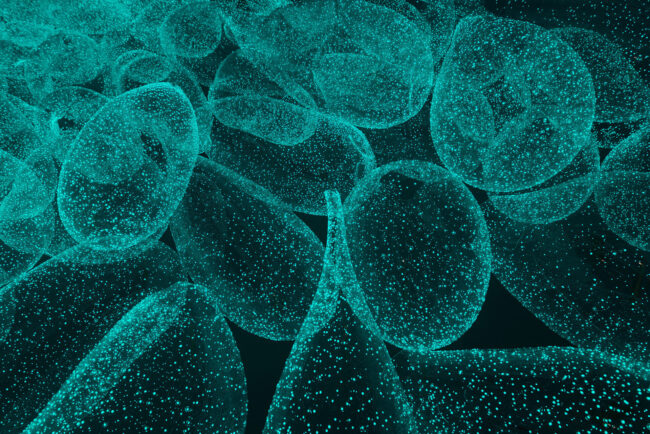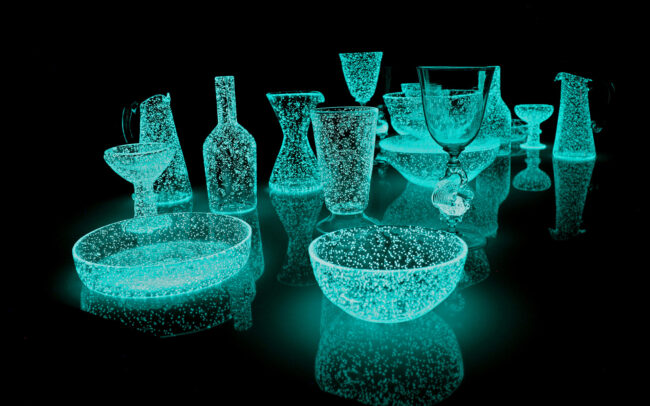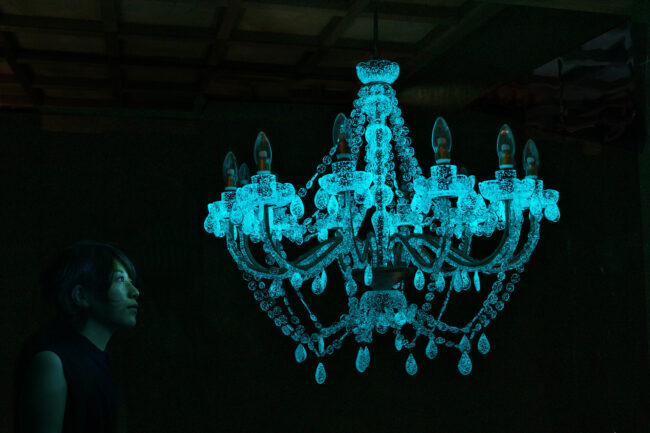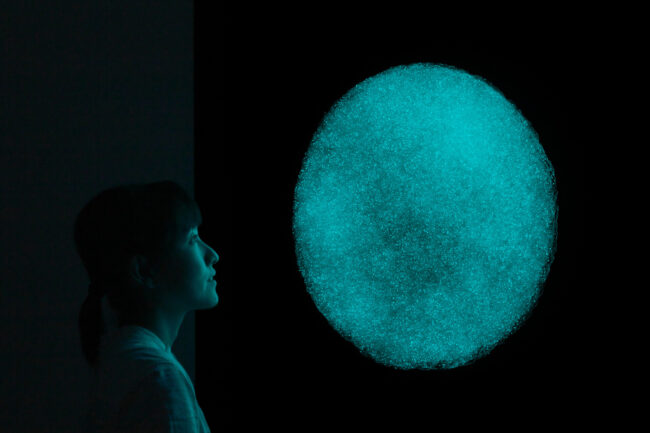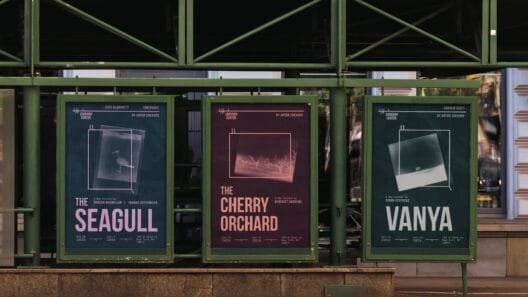Japanese artist Rui Sasaki turns the banal conversation of weather into a fascinating reflection on life with her glowing glass sculptures. With an interest in natural elements and the environment, Sasaki uses glass because of its deceptive fluidity and resemblance to water. Resident to one of the rainiest cities in Japan, Sasaki has an appreciation for sunshine amidst the abundance of cloudy days. Her sculptures are centred around the effort to preserve sunshine in glass and visualise it in an abstract way. Sasaki does this by using phosphorescent crystal mixtures that absorbs UV light and emits it in darkness.
Sasaki’s gleaming orbs of glass rolled in beads of phosphorescent crystals embody different properties of water and sunshine. This duality can be seen in the sculptures’ varying intensities of illumination and dotted surfaces that mirror the condensation that collects on flat surfaces. Sasaki’s hypnotizing creation of liquid sunshine further enlivens the conversation of weather by illustrating the unpredictability of it. The appearance of Sasaki’s installations are completely dependent on their environment. The brightness of the glass depends on how long the audience observes it, as well as the colour. While the eye adjusts to the light, the colour of the art slowly shifts from a green to a blue glow. If there are a lot of viewers coming in and out, the sculptures may not glow at all since the motion detectors stop the art from charging in the solarium light.
With all these factors, the glass never stays the same, giving every viewer a unique experience that can only be seen once. Sasaki’s artistic imitation of weather can be seen as a metaphor for how not a single day is the same, making the environmental conditions of that day unique to the experiences of that moment.

